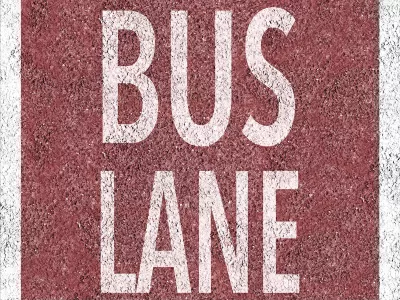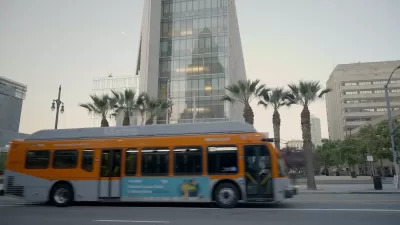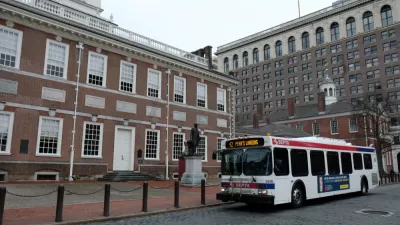A pilot program tested AI-powered cameras that monitored bus-only lanes for parked vehicles.

Windshield-mounted cameras on board buses operated by the Southeastern Pennsylvania Transportation Authority (SEPTA) caught vehicles blocking bus-only lanes 36,392 times in a 70-day period, reports Thomas Fitzgerald in The Philadelphia Inquirer.
The pilot automated enforcement program did not result in any tickets or warnings issued to drivers, but “The test documented the need for and feasibility of a permanent camera enforcement program, agency officials said.
In addition to facilitating faster and more reliable bus service, dedicated bus lanes improve passenger safety and accessibility. “Blockages of bus stops endanger passengers who have to step into traffic to board or disembark, SEPTA says; it is a particular problem for wheelchair users and other people with mobility issues.”
The article notes that the program exempted emergency responders and moving vehicles making legal right turns in designated areas. While supporters of automated enforcement say cameras make enforcement more equitable and prevent unnecessary confrontations with law enforcement, the technology has been criticized for failing to accurately identify vehicles and situations.
SEPTA is asking the city to permit a widespread automated enforcement program. “The agency believes that only a city ordinance would be required to authorize camera enforcement of parking violations. Using automated enforcement for moving violations in bus zones would require state legislation.”
FULL STORY: SEPTA cameras documented more than 36,000 vehicles blocking bus lanes and stops

Study: Maui’s Plan to Convert Vacation Rentals to Long-Term Housing Could Cause Nearly $1 Billion Economic Loss
The plan would reduce visitor accommodation by 25% resulting in 1,900 jobs lost.

Alabama: Trump Terminates Settlements for Black Communities Harmed By Raw Sewage
Trump deemed the landmark civil rights agreement “illegal DEI and environmental justice policy.”

Why Should We Subsidize Public Transportation?
Many public transit agencies face financial stress due to rising costs, declining fare revenue, and declining subsidies. Transit advocates must provide a strong business case for increasing public transit funding.

Paris Bike Boom Leads to Steep Drop in Air Pollution
The French city’s air quality has improved dramatically in the past 20 years, coinciding with a growth in cycling.

Why Housing Costs More to Build in California Than in Texas
Hard costs like labor and materials combined with ‘soft’ costs such as permitting make building in the San Francisco Bay Area almost three times as costly as in Texas cities.

San Diego County Sees a Rise in Urban Coyotes
San Diego County experiences a rise in urban coyotes, as sightings become prevalent throughout its urban neighbourhoods and surrounding areas.
Urban Design for Planners 1: Software Tools
This six-course series explores essential urban design concepts using open source software and equips planners with the tools they need to participate fully in the urban design process.
Planning for Universal Design
Learn the tools for implementing Universal Design in planning regulations.
Smith Gee Studio
Alamo Area Metropolitan Planning Organization
City of Santa Clarita
Institute for Housing and Urban Development Studies (IHS)
City of Grandview
Harvard GSD Executive Education
Toledo-Lucas County Plan Commissions
Salt Lake City
NYU Wagner Graduate School of Public Service





























